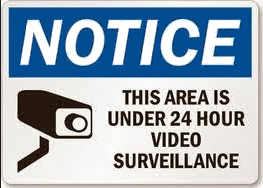
Video Surveillance Best Practices: A Guide For Administration, Policy, and Systems Management
Learn more about how to implement video surveillance best practices while preserving chain of custody, providing quick and easy search and playback, and protecting your organization.
SecurityHive’s Video Surveillance Best Practices Guide (461Kb/41 pages)
Understanding camera selection and placement, appropriate integration, and the right policies allow your organization to make the most of your video surveillance infrastructure.
The purpose of this document is to provide companies with guidelines on the overall administration, policies, and management of a video surveillance system and to provide recommendations for best practice implementations for video surveillance environments.
As video surveillance systems become more commonplace, many reports and research organizations have revealed efficient and effective methods used by companies to implement video surveillance solutions and how best to comply with the many requirements of corporate governance, as well as local, state, and federal regulations.
?Video Surveillance Best Practices? are efficient and effective methods used by companies to comply with requirements and business needs. Following are best practice guidelines for implementing and managing a video surveillance solution.
As video surveillance systems become more commonplace, many reports and research organizations have revealed efficient and effective methods used by companies to implement video surveillance solutions and how best to comply with the many requirements of corporate governance, as well as local, state, and federal regulations.
Traditional analog video has been around since the 1920s and that same basic technology is used by most CCTV video surveillance systems today. Just as CDs and DVDs have replaced audiocassettes and VHS tapes, IP-based networking and video storage systems are replacing analog solutions. There are still numerous areas where analog systems perform well and can meet the stated requirements of proper video surveillance.
According to research firm In-Stat, network IP-cameras will surpass analog camera sales in 2014. For new installations, or when replacing older components, a digital IP-based system is quickly becoming the preferred technological choice. This document will cover the best practices of video surveillance implementations.
With advances in computer technologies, video surveillance management systems are converging toward a more digital, IP-based, infrastructure. With IP-based solutions capable of interfacing with recorders, switches, computers, servers and the Internet, implementing stronger overarching management functionality is possible. New technologies and management advances are presenting new concepts that enable organizations to get the best return on investment for their video surveillance solution. These methods are referred to as ?best practices.?

